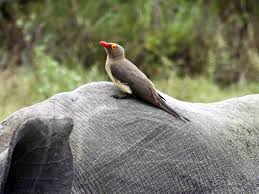|
|
Post by dinosauria101 on Mar 25, 2020 22:22:11 GMT 5
|
|
|
|
Post by 6f5e4d on Mar 25, 2020 23:45:05 GMT 5
Tyrannasorus is a bit bigger than the tick, so I think it might win this battle.
|
|
|
|
Post by dinosauria101 on Mar 25, 2020 23:49:13 GMT 5
I would favor the Tyrannasorus here as well. Slightly larger and probably more agile, though the tick does have superior durability I'd imagine.
|
|
|
|
Post by theropod on Mar 26, 2020 1:39:00 GMT 5
dinosauria101Do you know what a gram is? If so, can you please apply a certain minimum of common sense to your weight figures? I think we had this issue before, with apple seeds and with small theropods. Guesstimating the mass of very small things is just as difficult as guesstimating the mass of very large things, so we need to employ calculations for plausibility-testing to see if our figures make sense. It is physically impossible for a 3 mm tick to weigh 1.2 grams, because at the density of water 1 gram would be 1 cm³, i.e. a cube with 1 cm long sides. You can do some very quick and dirty calculation that would rule out the most obvious of errors: The density of water (1.0 kg/l or g/cm³ or t/m³) is generally a good approximation. Accordingly, the weight of any animal is smaller than the weight of its bounding box or sphere if it were the density of water. If you don’t know the other dimensions and want to be very simplistic, imagine a cube with the sides being the length of the animal’s longest dimension (3 mm in this case, for a volume of 0.3³cm³), meaning the volume is definitely greater (likely several-fold) than that of the animal. In this case even that would only be 0.3³*cm³*~1 g/cm³=0.027 g=27 mg. You can also do it with a sphere to get a slightly more constrained figure, assuming the longest dimension of the animal is the diameter of the sphere 1.5³*4/3*pi*cm³*~1 g/cm³, this would make it only 14 mg. Those are by no means accurate mass estimates, but they are figures of which we can be certain they will always be bigger than the real mass. So when you search for a weight figure and you find one that’s over those 14 mg, you know it’s either a bad guess, or refers to an engorged tick. Engorged ticks can be much heavier, but I doubt any can reach over 1 g either, and this doesn’t apply to the beetle anyway.
|
|
|
|
Post by dinosauria101 on Mar 26, 2020 1:53:42 GMT 5
Must have mixed the weight up. I'll probably change the OP.
You do have a point with the water thing. I would have to be more careful with that.
|
|
|
|
Post by velesoid on Mar 26, 2020 20:18:34 GMT 5
The tick really has no usable weapons to apply against another arthropod
|
|
|
|
Post by kekistani on Mar 28, 2020 12:42:59 GMT 5
How the hell does either one kill the opponent?
|
|
|
|
Post by DonaldCengXiongAzuma on Mar 28, 2020 14:28:34 GMT 5
I doubt the tick can pierce through the t rex's skin but again even rhinos have ticks despite their thick skin so there is a possibility.
|
|
|
|
Post by DonaldCengXiongAzuma on Mar 28, 2020 14:29:41 GMT 5
![]()  This oxpecker eats ticks on elephant and rhino hide. |
|
|
|
Post by velesoid on Mar 28, 2020 20:48:51 GMT 5
I doubt the tick can pierce through the t rex's skin but again even rhinos have ticks despite their thick skin so there is a possibility. ticks have this sort of proboscis that is best suited for piercing flesh, not hardened chitinous armor |
|
|
|
Post by Infinity Blade on Mar 28, 2020 21:01:58 GMT 5
I doubt the tick can pierce through the t rex's skin but again even rhinos have ticks despite their thick skin so there is a possibility. That doesn't really tell me a whole lot. Animal skin thickness isn't uniform throughout the entire body. Skin can be thicker in some areas but considerably thinner in other parts. That makes sense because some parts of the body need to be more mobile and the skin must fold to accomodate that mobility; the thinner it is, the easier it folds. When their hosts are rhinos, ticks usually target the skin folds in the genitals, anal regions, in and on the ears, and around the eyes ( link->). ![]()  This oxpecker eats ticks on elephant and rhino hide. Okay...? |
|
|
|
Post by elosha11 on Mar 29, 2020 0:02:41 GMT 5
Are either of these animals even thought to have engaged in combative behavior? I've never heard of a tick fighting anything, and if t rex was carrion eater, that doesn't suggest predatory and/or aggressive behavior either. Still I'd vote for t rex if I had to choose.
|
|
|
|
Post by velesoid on Mar 29, 2020 0:25:35 GMT 5
Are either of these animals even thought to have engaged in combative behavior? I've never heard of a tick fighting anything, and if t rex was carrion eater, that doesn't suggest predatory and/or aggressive behavior either. Still I'd vote for t rex if I had to choose. ground beetles and rove beetles both eat carrion but they also engage in predatory behaviour, its hard to tell |
|
|
|
Post by DonaldCengXiongAzuma on Nov 23, 2020 11:35:30 GMT 5
I think it is going to be a steelmate.
|
|